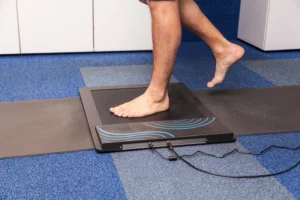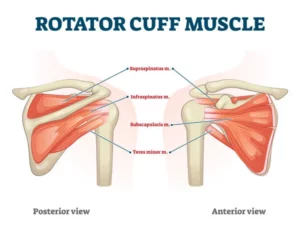Introduction: Demystifying the Os Trigonum
The os trigonum, a small but significant anatomical structure in the ankle, often goes unnoticed until it becomes a source of discomfort. In this comprehensive guide, we delve deep into the intricacies of the os trigonum, shedding light on its origins, functions, potential issues, treatment options, and preventive measures. Whether you’re an athlete, a healthcare professional, or simply intrigued by the wonders of the human body, this guide equips you with the knowledge to understand and navigate the realm of the os trigonum.
Section 1: The Hidden Component of the Ankle
Nestled within the recesses of the ankle joint, the os trigonum is a small bone that forms as an accessory ossicle in some individuals. It is positioned just behind the talus bone, one of the key bones of the ankle. While not present in everyone, the os trigonum can have a significant impact on ankle function and mobility, especially when it becomes a source of discomfort.
Section 2: Unearthing the Development Process
The os trigonum typically develops during adolescence, a result of the separation of a secondary ossification centre from the talus bone. This ossicle remains separate in some individuals, forming the os trigonum. In others, it fuses with the talus bone. The prevalence of the os trigonum varies, and while it’s often asymptomatic, it can lead to specific issues, particularly among athletes and dancers who subject their ankles to repetitive stress.
Section 3: Navigating the Spectrum of Symptoms
For many individuals, the os trigonum remains inconspicuous and devoid of symptoms. However, in cases where it becomes problematic, the os trigonum can give rise to pain and discomfort in the back of the ankle. Activities that involve plantarflexion (pointing the foot downward) or forceful pushing off, such as dancing or sprinting, may exacerbate the discomfort. Swelling and tenderness around the os trigonum area can also occur.
Section 4: Unveiling Os Trigonum Syndrome
When pain and discomfort related to the os trigonum become chronic and interfere with daily activities, the condition is often referred to as os trigonum syndrome. This syndrome is particularly prevalent among athletes, dancers, and individuals who repeatedly subject their ankles to extreme ranges of motion. The constant stress placed on the os trigonum can lead to inflammation, irritation, and the development of this syndrome.
Section 5: Seeking Diagnosis and Assessment
Accurate diagnosis of os trigonum syndrome involves a comprehensive evaluation by a healthcare professional. Physical examinations and a review of medical history provide valuable initial insights. Imaging techniques such as X-rays and MRI scans can visualize the os trigonum’s position, its relationship with surrounding structures, and the extent of any inflammation or injury.
Section 6: Navigating Treatment Options
Treatment approaches for os trigonum syndrome vary based on the severity of symptoms and the individual’s lifestyle. Conservative measures often include rest, ice, anti-inflammatory medications, and physical therapy to alleviate pain and reduce inflammation. In some cases, immobilization of the ankle may be recommended to allow the os trigonum to heal.
Section 7: Exploring Surgical Solutions
When conservative treatments fail to provide relief, surgical intervention may be considered. Surgical removal of the os trigonum, known as an os trigonum excision, aims to eliminate the source of discomfort. This procedure is typically reserved for cases of persistent pain that significantly impede the individual’s quality of life or athletic performance.
Section 8: Preventive Measures
Prevention plays a crucial role in managing os trigonum-related issues among athletes and dancers. Proper warm-up routines, targeted stretching exercises, and gradual increases in training intensity can help reduce the risk of irritation and inflammation around the os trigonum. Wearing appropriate footwear that provides ankle support is also important, as it helps distribute forces evenly during high-impact activities.
Section 9: Embracing Foot Health and Wellness
While the os trigonum may present challenges, understanding its nuances empowers individuals to navigate this anatomical anomaly with grace. Whether you’re an athlete aiming for peak performance or someone seeking foot health, knowledge and proactive care can pave the way to pain-free movement. By embracing foot health and prioritizing preventive measures, you can stride confidently towards a future where the os trigonum remains a hidden wonder rather than a source of discomfort.


